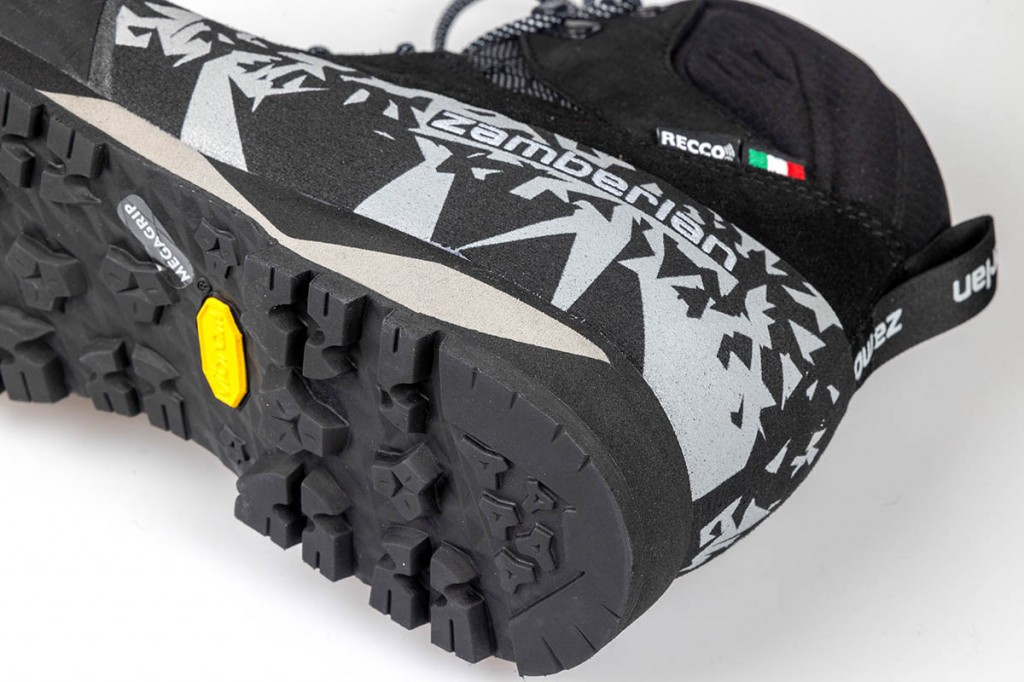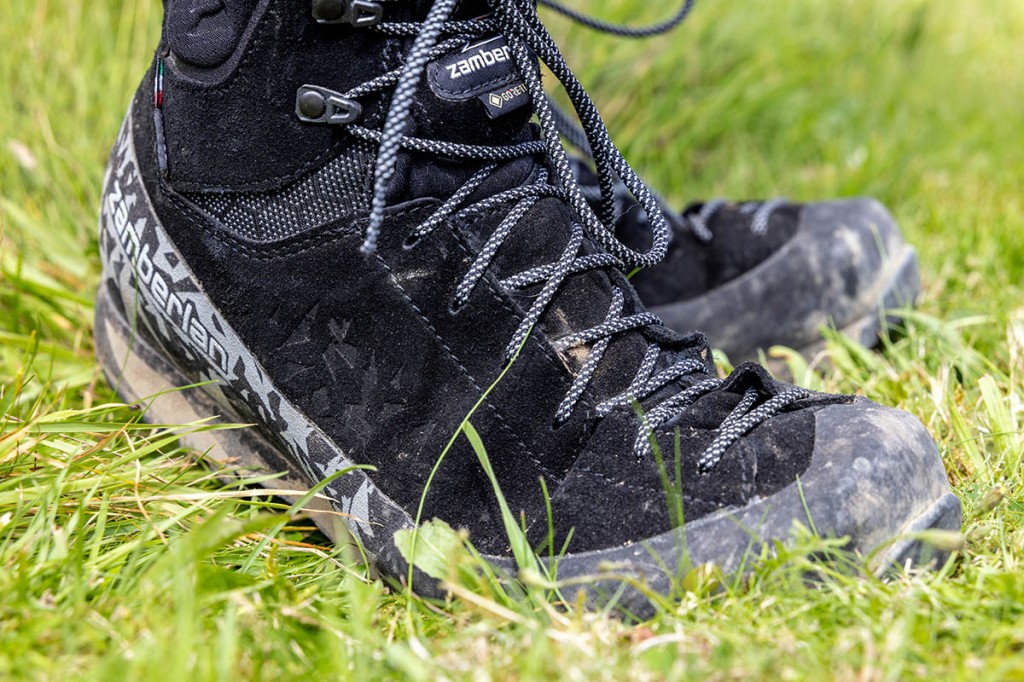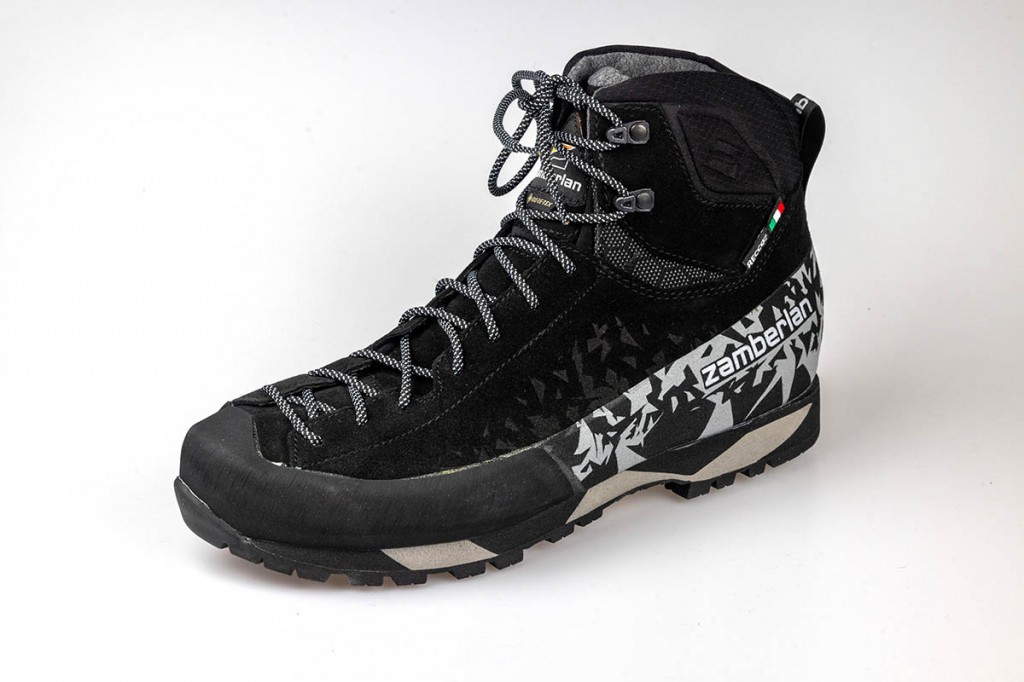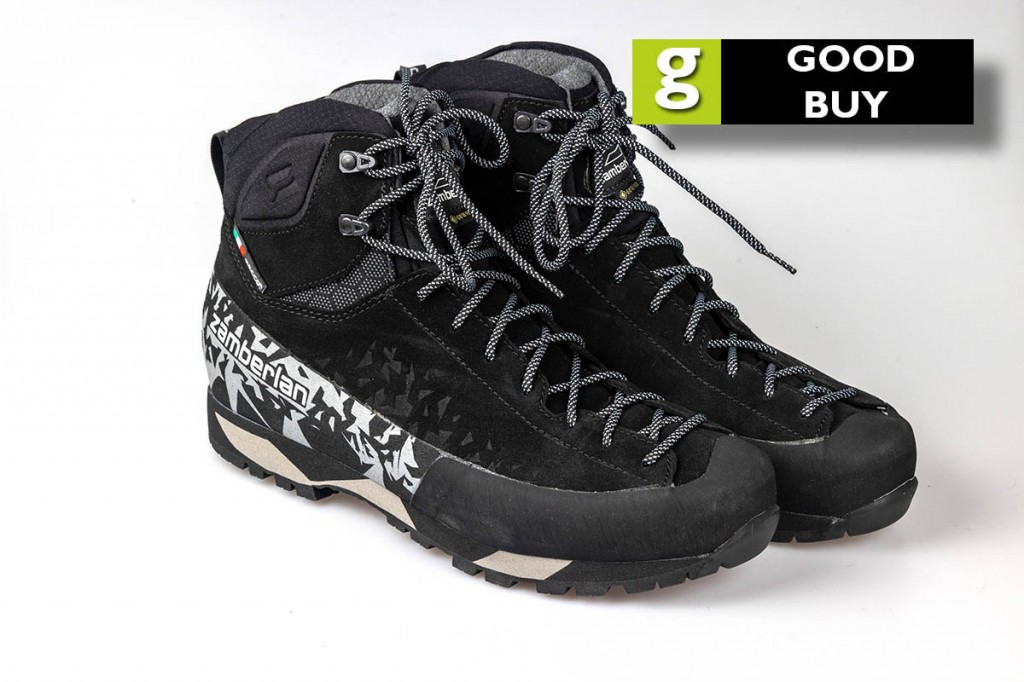Price: £260
Weight: 1,054g/pair
Country of manufacture: Italy
Sizes: 39-46
Colour: black/grey
Uppers: Hydrobloc suede
Waterproofing: Gore-Tex Extended Comfort
Sole stiffness: 7/10
Women’s version: yes
The Salathé Trek GTX is the Italian brand’s modern take on a hillwalking boot.
The uppers are pliable suede with a deep rubber rand encircling the lower part of the boot, and incorporating a bold pattern and logo.
I’ve used the boots extensively over the past few months, in a variety of conditions and on different terrain, and they performed well. The suede has Zamberlan’s Hydrobloc treatment and resisted the wet well. The second layer of defence, a Gore-Tex Extended Comfort membrane, took care of any water that seeped in after hours in rainy conditions.

An extended rand provides extra protection in the lower part of the boot. Photo: Bob Smith Photography
The material is between 1.6mm and 1.8mm thick, providing enough protection on technical terrain while still allowing the uppers to mould nicely to the foot’s shape. A stiffened toe box and the rubber rand extension adds extra protection and also keeps out water from puddles. At the back of the boot, the overlay rises to cover the whole heel area, including the stiffened heel cup.
Lacing goes forward to the toe area, allowing the forefoot to be tensioned separately from the rest of the boot. There are seven pairs of lace holes, with a small cut-away at the forefoot flex point to allow easier bending of the boot here. There are then two pairs of metal hooks at the ankle area to cinch in the ankle collar. The tongue has good foam padding and the elasticated gusset goes up beyond the height of the first pair of hooks, ensuring water is kept out if stepping through deep puddles, or if torrential rain is running down your waterproof trousers. The ankle cuff has good padding and is ventilated. There’s a webbing pull-on loop at the back of the ankle section which was useful as it was a snug fit getting my foot into the boot.
The boots also have a Recco radar reflector which will help rescuers who are equipped with the system to find the wearer in an emergency.
The sole is a Vibram Pepe unit, which utilises Megagrip compound. The midsole uses dual-density EVA. This, along with an insole with medium foam padding, made for underfoot cushioning that had just enough for long walks and trekking, while still providing good stability on technical, scrambly terrain.
Braking and traction on rock was very good, and the tri-direction lugs on the inner sections of the outsole coped well with mud and grassy parts of my routes.
The forefoot is fairly wide and low volume, which suited my foot shape. On prolonged journeys, towards the end of the day there was minor pressure on the outer edges of my forefoot and my feet expanded. Otherwise the comfort was excellent. There’s a slight rocker to the sole, which helped a good gait on multi-day excursions. Torsional stiffness was medium, though there was enough stability on rocky sections.
The relative lightness of the Zamberlan Salathé Trek GTX and the suppleness of the uppers made for a comfortable experience on longer days and multi-day expeditions in the Lake District, while providing enough stability while wearing a heavy rucksack. The boots also coped well with wet and boggy moorland.
In a nutshell, these Zamberlan boots are good all-round hillwalking footwear, well suited to the UK’s often wet uplands, with enough stability and support to give confidence on technical ground.
The brand also recommends them for via ferrata use. The technical nature of the Zamberlan Salathé Trek GTX would also make them a good choice for summer alpine trekking.
The boots are made in Italy, so fewer transport miles than those made in east Asia. The quality was very good, indicting their durability should be good. Other than that, there’s little information on sustainability on the Zamberlan company generally.
Best uses: hillwalking, mountain walking, trail walking, trekking, via ferrata, country walking.
Performance 36/40
Comfort 26/30
Quality 8/10
Value for money 7/10
Sustainability 5/10
Total score: 82/100


